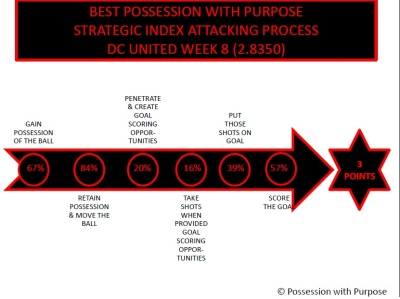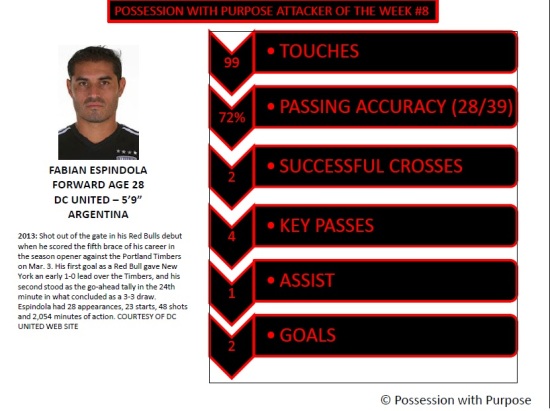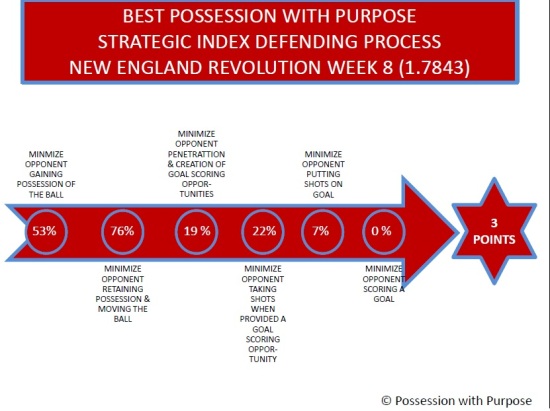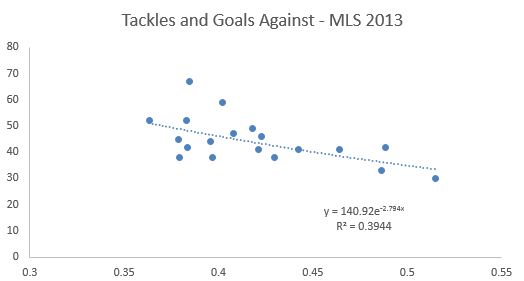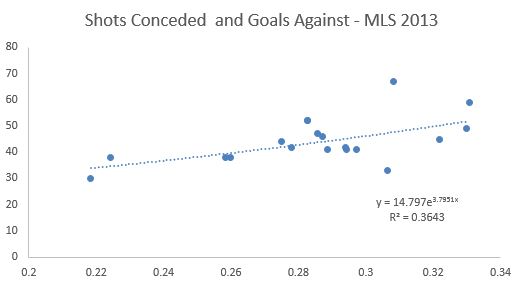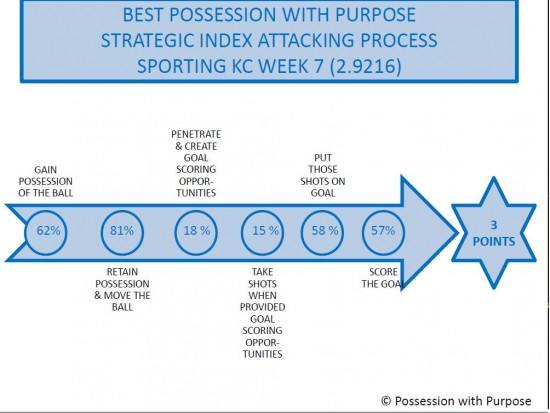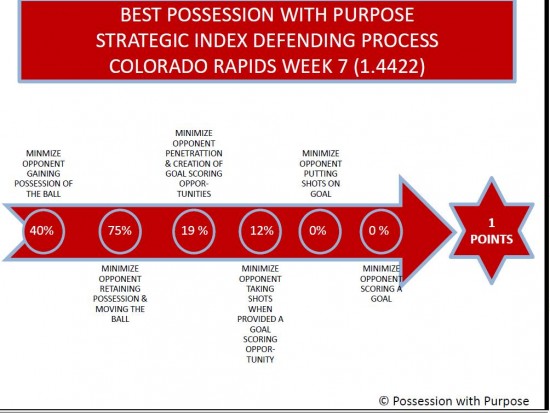How It Happened: Week Eight
/The scorelines of the three games I caught this weekend had a very "binary solo" feel to them: 1-0, 1-1, 1-0. There were impressive performances from young wingers, outstanding goalkeeping, and irresponsible defending - and that was just in these three games. Here's how it happened for six teams last weekend. Columbus Crew 1 - 1 New York Red Bulls
Stat that told the story for New York: 5 terrific chances in the first 10 minutes
This was certainly the premier game I tuned into this weekend: two teams fighting to stay near the top of the Eastern Conference and who play entertaining soccer. Both teams played pretty well, too, for the most part - a notable exception was the first ten minutes when Red Bulls were terrific and Columbus was sleepwalking. NYRB would look back on these first ten minutes with great angst, as great saves by Steve Clark and near misses by Eric Alexander and Thierry Henry made them all go for naught. New York would eventually get their goal through the red-hot Bradley Wright-Phillips, but also gave up their share of great chances that required big saves from Luis Robles. All in all, this was probably a game where both teams left fairly content with the result and how they played.
Stat that told the story for Columbus: 7 first time crosses from wide players
I went over the game from both team's perspective above, so I'm going to use this space to talk a little general soccer strategy. Each and every game I ever watch, a wide player will receive a ball in the attacking third with forwards and attacking midfielders streaking into the box. And probably 80% of the time, the winger slows down and takes a touch to steady himself before crossing it, thereby forcing his teammates crashing the box to stop or delay their runs, and allowing the defense a chance to get set and defend the cross. Every time this happens, I get inexplicably angry. Crossing the ball with the first touch is admittedly more difficult and not always the right play, but it overjoys me to see Crew wingers (especially Hector Jimenez and Josh Williams) send in these first time crosses. Of the 23 the team recorded against New York, I counted 7 that were on the wide player's first touch. Oh, and the one that led to the team's lone goal? First time.
Montreal Impact 1 - 0 Philadelphia Union
Stat that told the story for Philadelphia: 15 giveaways in their own half by Union defenders
I used this stat for one of the games last week, and it's a bit of a tough one to quantify. I included the above image to show how I figure: 15 of the unsuccessful passes by Philly defenders ended in their defensive half (one of which led directly to the game's lone goal). For a team who have as impressive moments as the Union have early in the year, this kind of sloppiness out of the back really hurts. I don't want to heap all the criticism on Amobi Okugo, Sheanon Williams and the other defenders, because the truth is part of the problem stems from the midfield. As good as Maurice Edu and Vincent Noguiera look at times, there's often a conspicuous lack of anyone getting open in the middle of the field for the back line to pass to. The point is this: Philadelphia has certainly looked like a playoff team at times and probably deserves to have more points than they do, but at the same time are usually their own undoing.
Stat that told the story for Montreal: only 41 passes in attacking half by defense/midfield; 51 by four attackers
When watching the Impact this weekend, I was struck by the fact that four attackers in their formation were actually pretty creative and fun to watch. Jack McInerney, Marco Di Vaio, Felipe and Justin Mapp do a lot of good work interchanging and creating chances (especially on the counter). But their defense is fairly fragile, and because of that they play two central midfielders who concentrate on defending first and foremost. This leads to Montreal never really pushing up the field and keeping possession in the attacking half, which ends up putting a lot of pressure on them to defend for heavy minutes. This is one of many reasons that Montreal are near the bottom of the standings; on the other hand, those four attackers can be good enough to win some points on their own at times.
San Jose Earthquakes 1 - 0 Chivas USA
Stat that told the story for Chivas: 7/17 crosses completed by Leandro Barrera
Chivas had to be disappointed to lose this game. They outplayed the Earthquakes, particularly in the first half. They had more possession and more chances than San Jose on the whole, but they were really lacking in quality for the final ball/shot. A prime culprit on this was also one of their best players on the day, young electric winger Leandro Barrera. He mostly plays with the same strategy as guys like Fabian Castillo or Teal Bunbury; that is, run really fast past the defender and try to cross or shoot. Unfortunately, the end of that sequence is a struggle for Barrera: you can see from the image above that his crosses were as likely to fly well over the goal as they were to find a teammate in the box. If he can improve his service, Chivas should see an uptick in their goal scoring.
Stat that told the story for San Jose: 12 midfield recoveries + interceptions in the first half; 17 in the second
San Jose wasn't overly impressive in earning their first win of the year, but the second half was markedly better than the first. Admittedly, some of this was due to Chivas playing the last portion of the game down a man, but I think the largest reason for the second half improvement was the introduction of Yannick Djalo to the game. Bringing in a true wide threat stretched Chivas' midfield quite a bit, which was stocked with 3 center mids and two wide players who were wont to tuck inside. This led to the Goats controlling the midfield and winning a lot of balls in the first half, but they were spread thin and had a harder time in the second stanza. To wit: Chivas had 20 recoveries/interceptions to San Jose's 12 in the first half, but were out-dueled 17-14 by that measure in the second. Once Djalo is healthy, he needs to be on the field all game: it's clear that his presence brings a threat not only on the ball, but it also helps the team in other ways.
Agree with my ideas on these games? Think I'm an idiot? I love to hear feedback. @MLSAtheist







